Deliciously tasteless mushrooms enjoyed around the world. Wood ear mushrooms or Kikurage in Japanese (Auricularia species) are a bit of a chewy, ear-shaped paradox. Whether you hunt the woods or the Asian grocer, In this post I'll explain what you need to know. We'll cover how and where to get them, how different varieties can be used in the kitchen, and some of my favorite wood ear recipes.
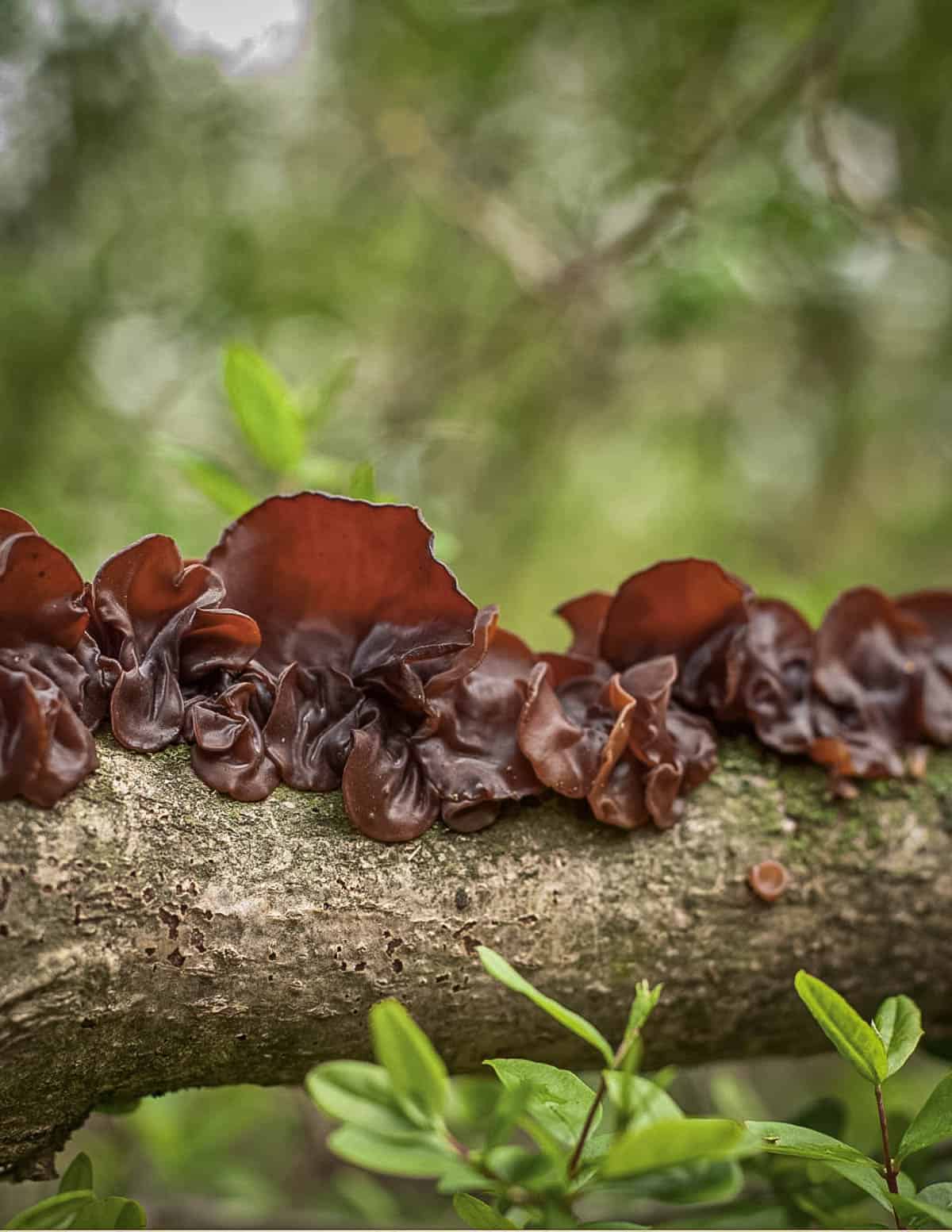
The mushrooms are best represented in Asian cuisine and are used in many places, but most of the recipes you'll see come from Chinese and Japanese cuisine.
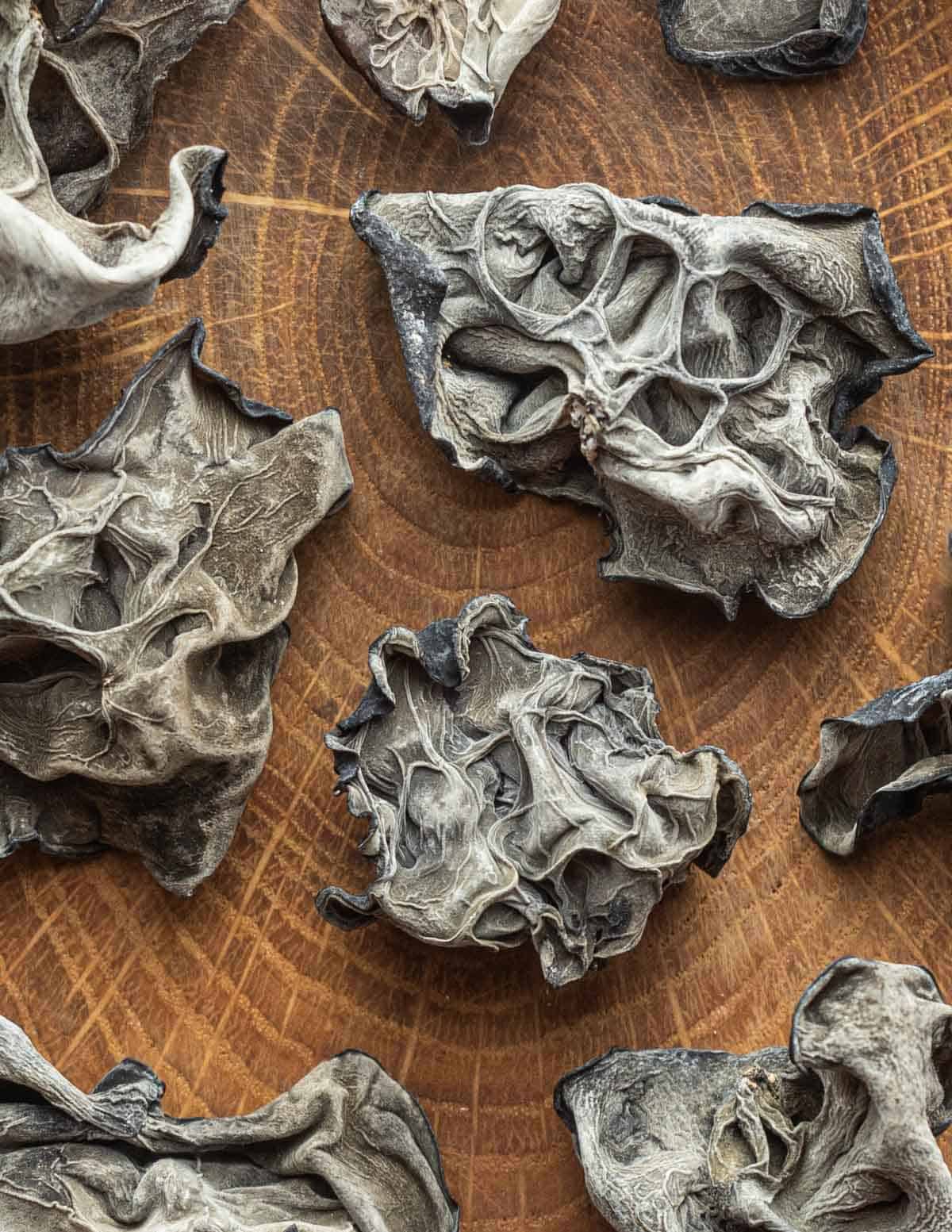
They're one of the few mushrooms enjoyed in Japan that lack the word "take/mushroom' in their common name. They're enjoyed around the world and there's a long list of funny names from Asian countries ranging from ear fungus to rat's ear. A few of the more common names you might see are below.
English Common Names
- Wood Ear
- Black Fungus
- Tree Ear
- Jew's Ear (outdated as it's offensive)
- Ear of Judas
- Jelly Ear or Jelly Mushroom
- Cloud Ear Fungus
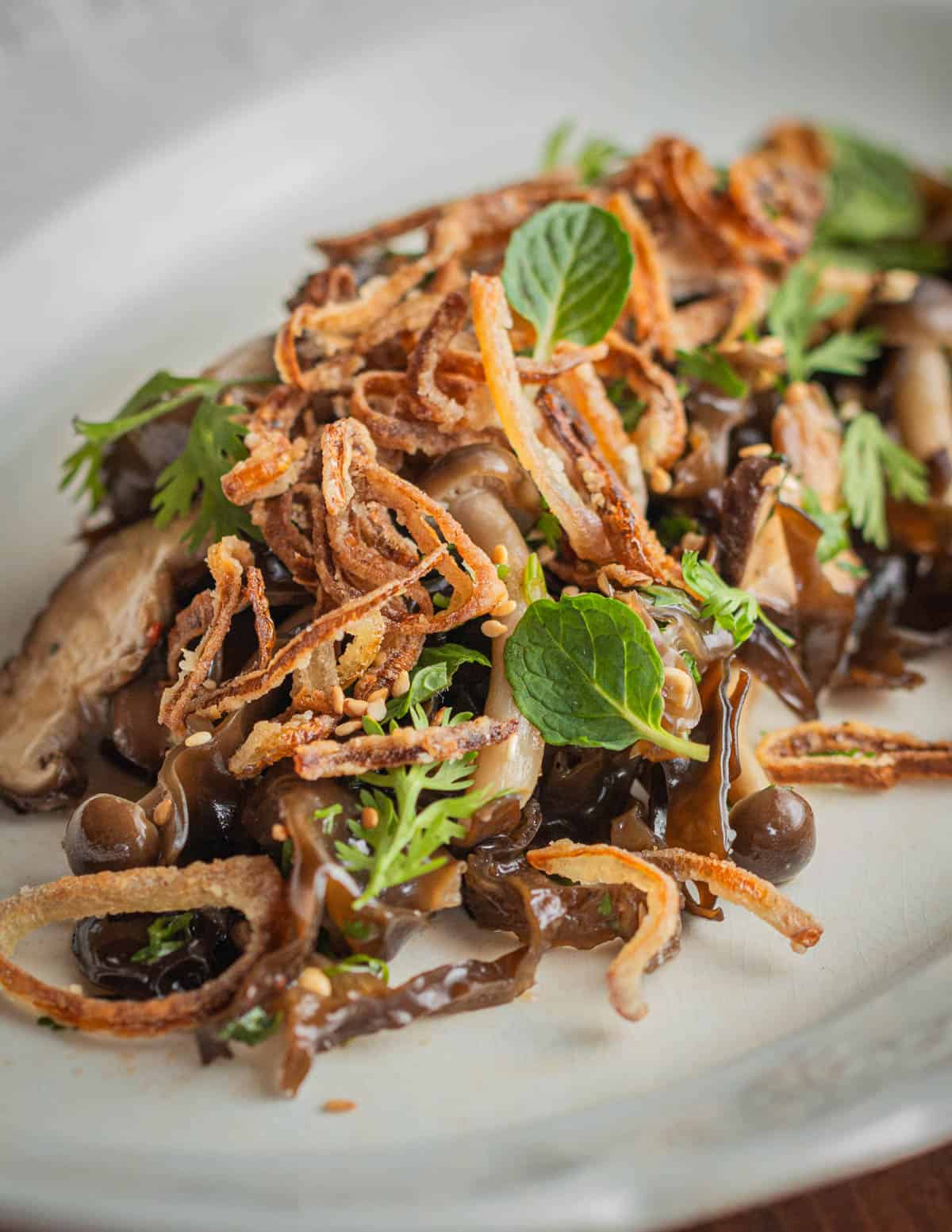
Wood Ear Mushroom Identification & Foraging
The mushrooms resemble fleshy, light brown ears growing from the wood of coniferous and deciduous trees. Often cup or ear-shaped, they have a gelatinous, rubbery texture that tastes better than it sounds.
Below: perfect A. angiospermarum from Minnesota. Note the tiny hairs on the sterile surface and the white bloom on the underside / spore-bearing surface that may be present when young.
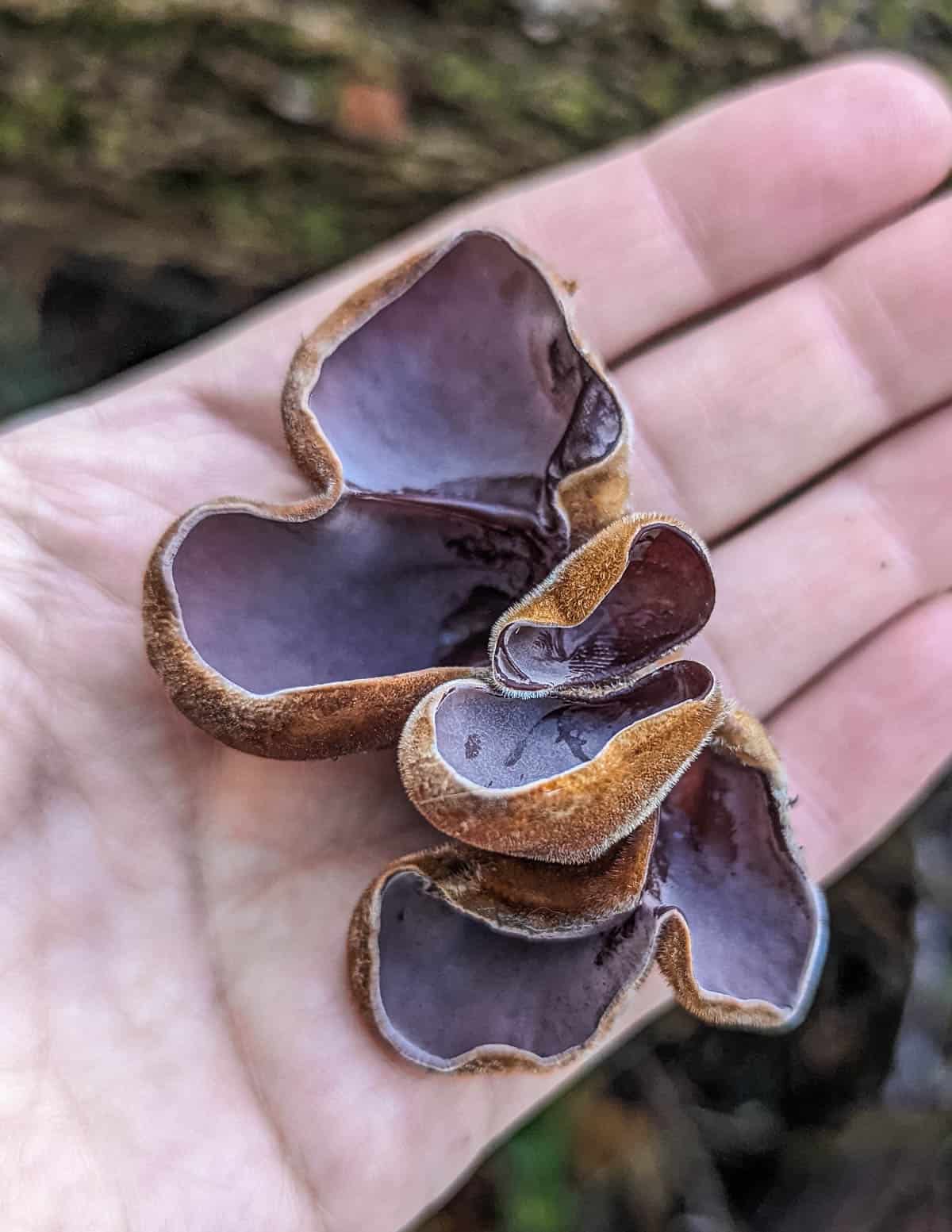
The thin flesh and wrinkled, occasionally veiny appearance can help separate them from similar looking mushrooms like Exidia species. They can appear gray or brown due to the presence of tiny hairs-something none of their look-a-likes have (see above).
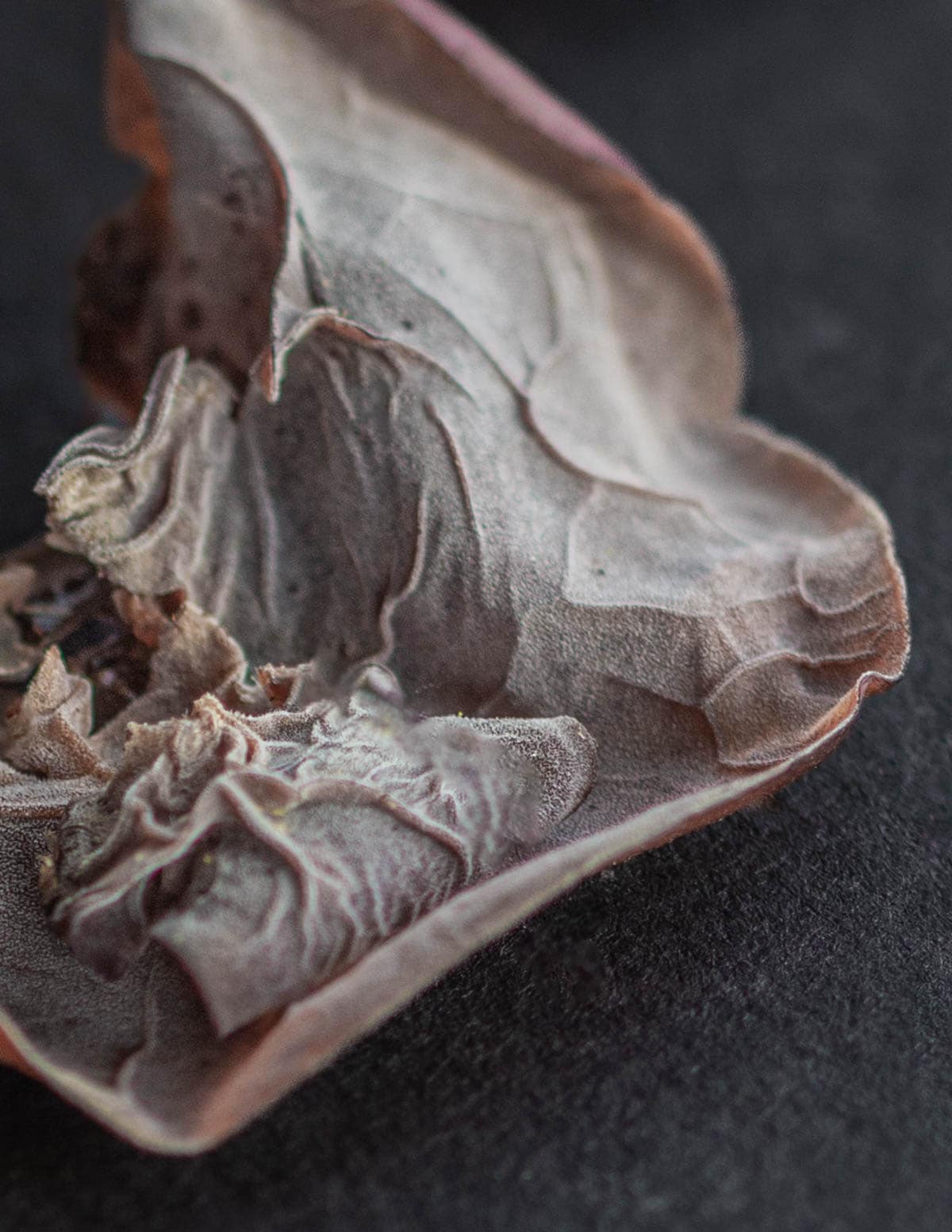
A saprobic fungus like oyster mushrooms, wild wood ears are commonly found on decomposing wood, logs, sticks and stumps after rainy days. They're widespread throughout North America, appearing in spring, summer and fall and even into early winter. The latest I've picked them is mid-January in Wisconsin.
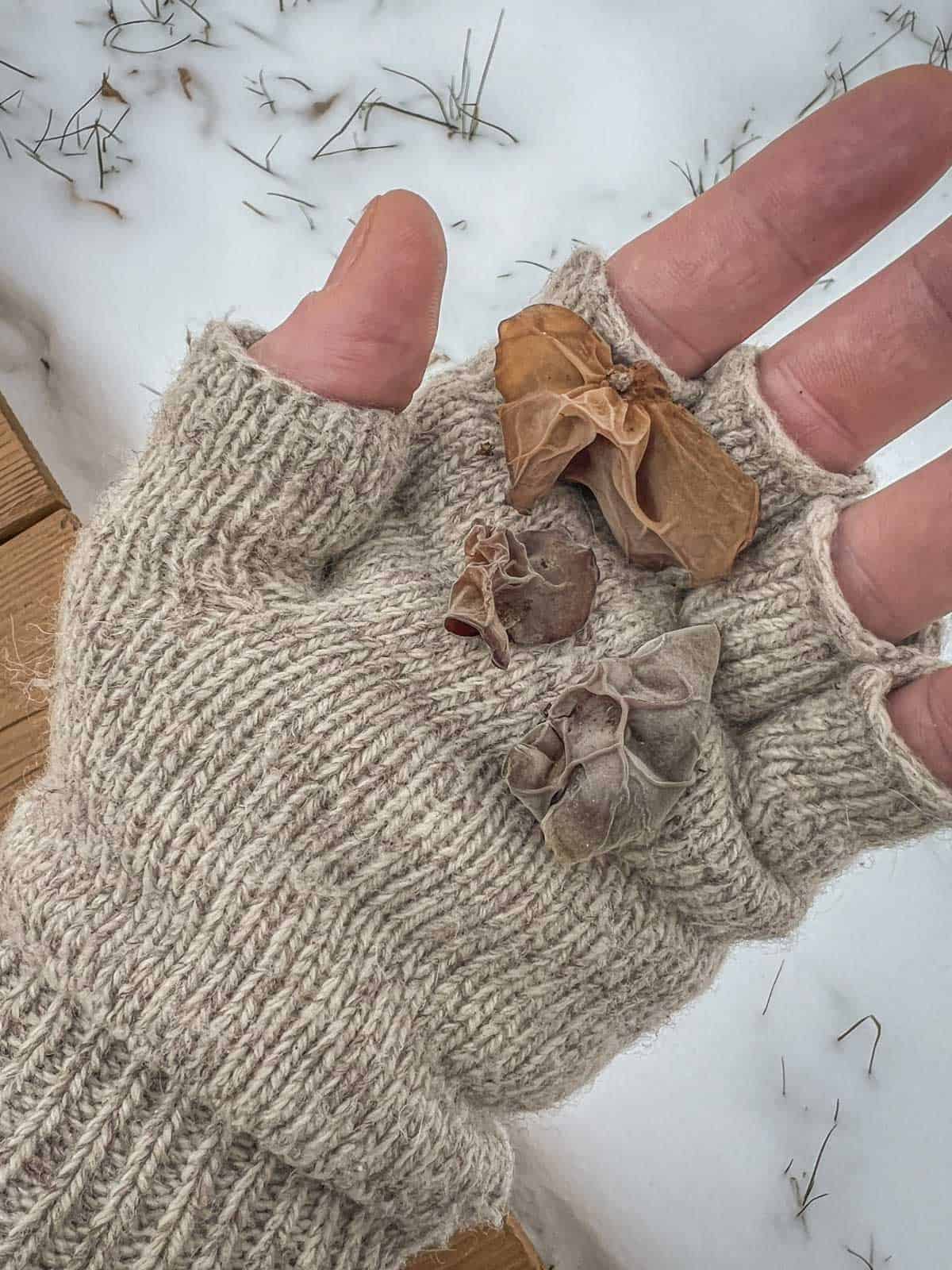
Along with enoki mushrooms, Auricularia are one of the few cold-adapted fungi that can freeze at night and thaw in the day without suffering for it. I've picked them in the winter to use in soup.
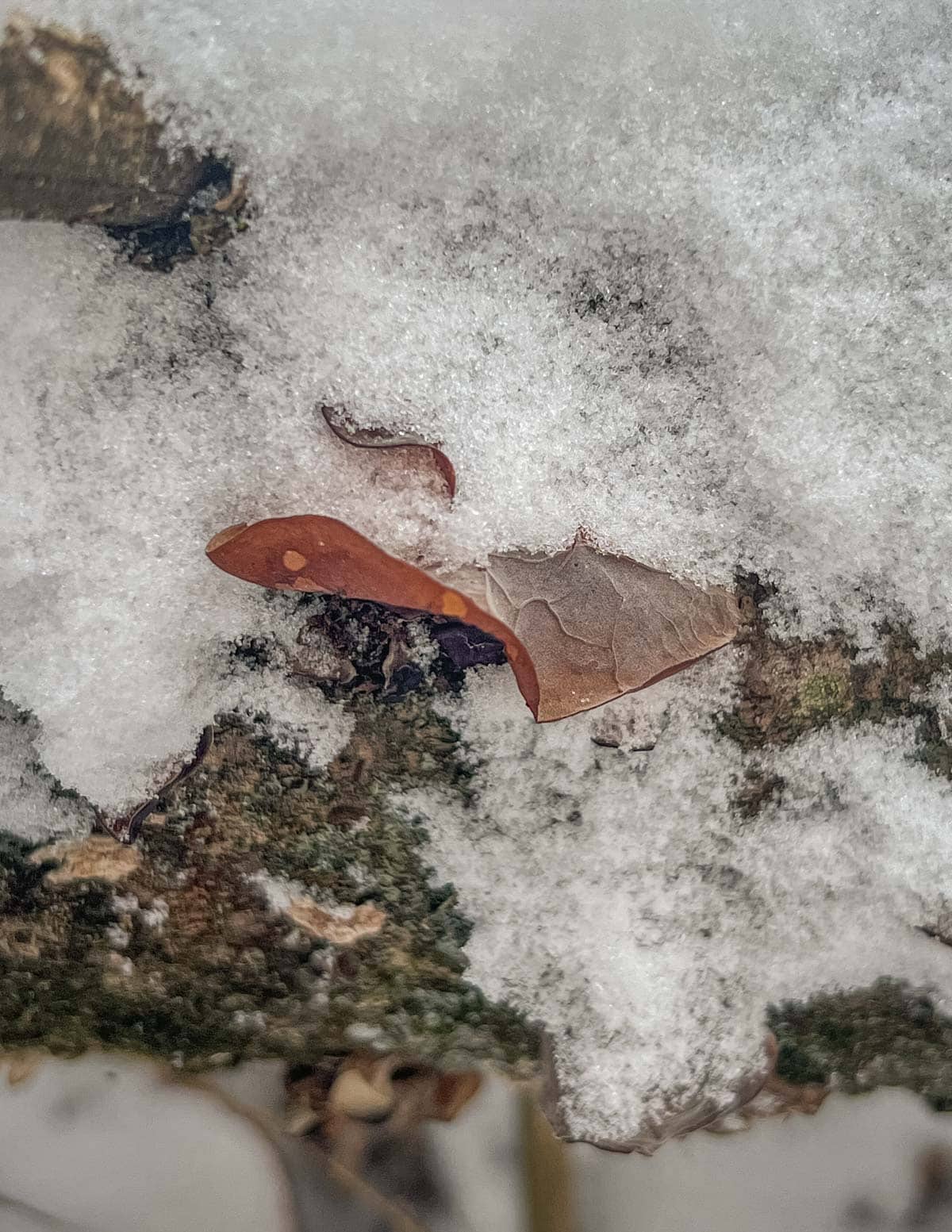
Wood Ear Varieties
There's a few different types you might encounter. All woods ear varieties are edible, but there's noticeable differences between commonly sold Asian species which are all confusingly labeled as "Dried Black Fungus" or "Black Ear Fungus". Truly wild varieties will have a reddish to brownish hue as opposed to black.

Asian Species
Auricularia cornea
Formerly A. polytricha, this is the chewiest of all species I've tried. A. cornea is easy to tell apart from other varieties, as the sterile surface is coarse and hairy. Another name for the species is hairy wood ear. It can appear light brown to beige after drying instead of grey. It's tougher than other species and should be cooked in soup.
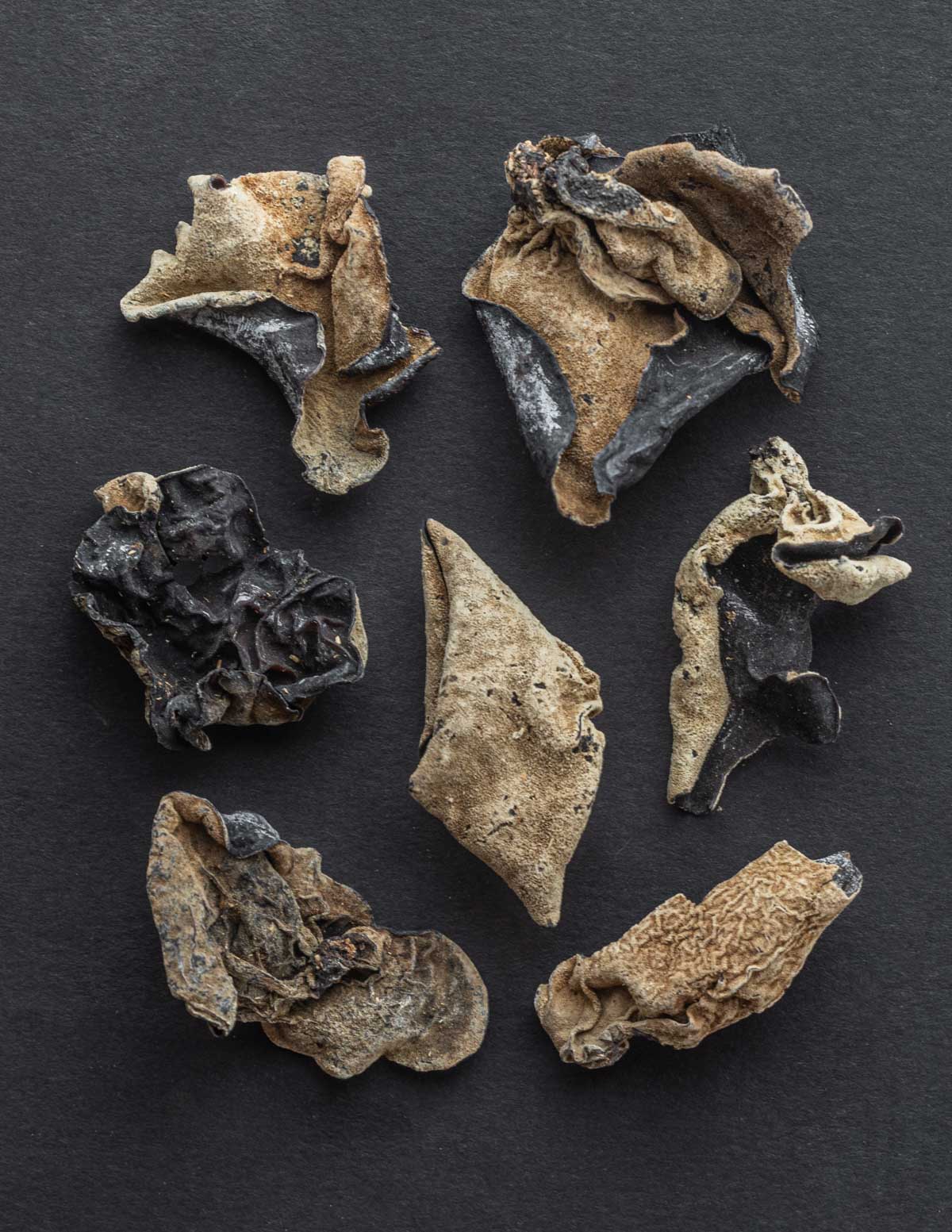
Auricularia heimuer (Black Wood Ear)
Often sold side-by-side with A. cornea, A. heimuer is probably the species sold in the most bulk around the world. Cultivated species are black-much darker than their wild cousins (see below). They're more tender than A. cornea and what I recommend buying if you want to try them.
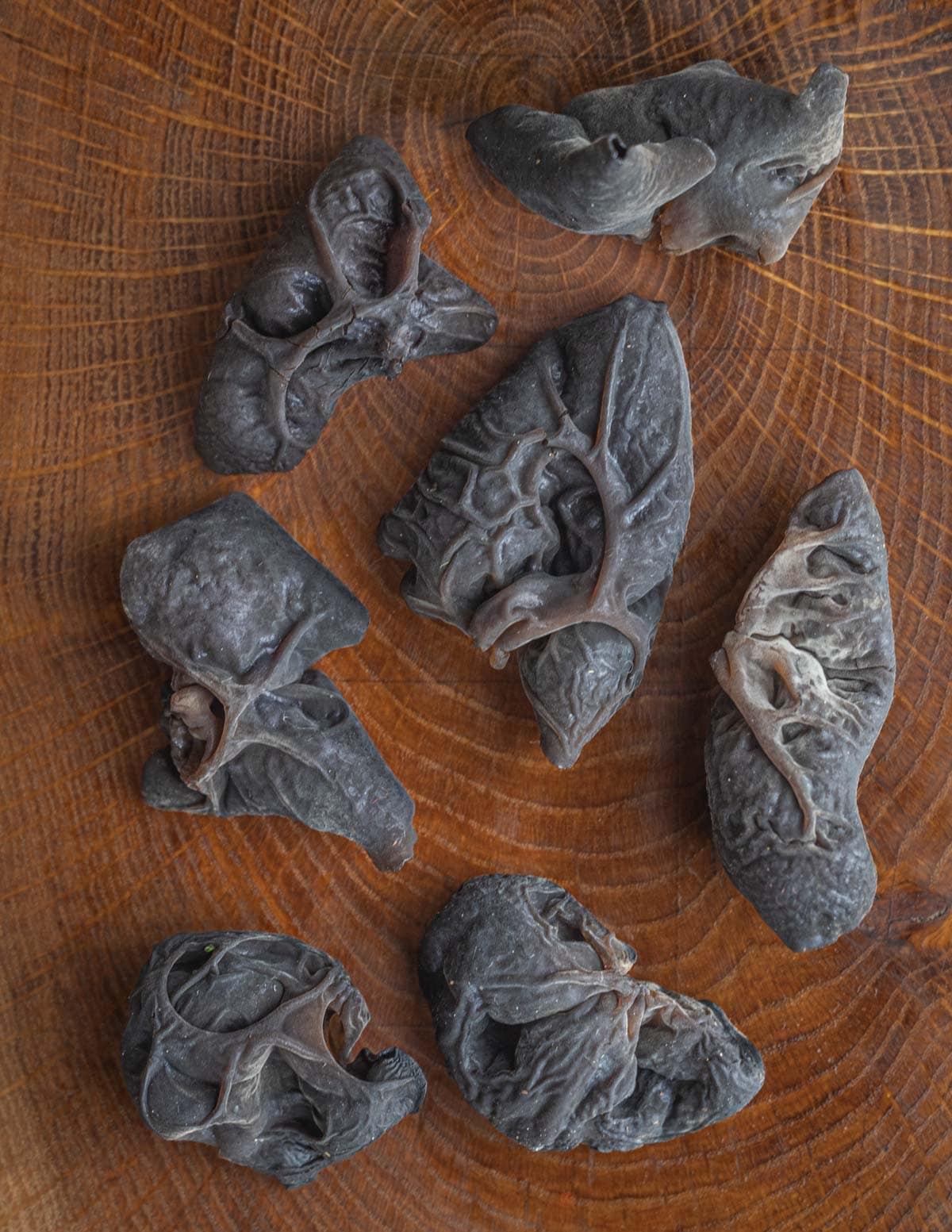
North American Species
For a long time North American species were grouped together as Auricularia americana or previously Auricularia auricula-judae. At the time of writing, we now know there's at least 4 distinct types in North America. As time goes on more will probably be revealed.
Auricularia americana
Recently named in the last decade, A. americana is strictly a conifer decomposer that seems to prefer fallen balsam fir, often growing next to Shizopora paradoxa on the same log. I've harvested them in Northern Minnesota and Northern Wisconsin.

Auricularia angiospermarum
A. angiospermarum is the hardwood decomposing cousin of A. americana. I've picked them growing on dead oak trees and branches in Minnesota and Wisconsin. Like A. americana, they can be found for the majority of the growing season as long as there's rain.
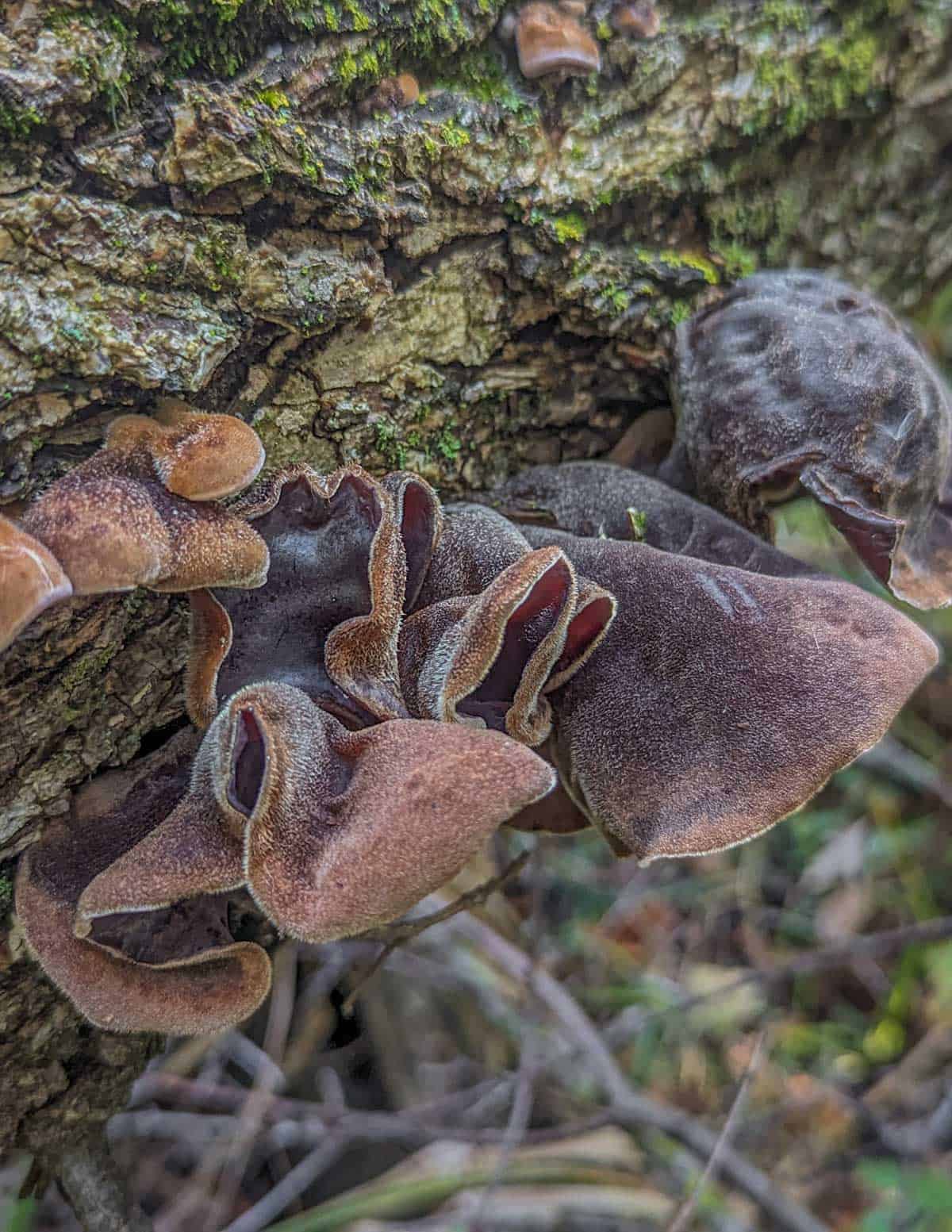
Besides the two aforementioned species, there's also Auricularia fuscosuccinea that grows on hardwoods in the American Southeast. Auricularia nigricans is found in the American South from Louisiana through the Caribbean. All North American varieties should be interchangeable in the kitchen.
Wood Ear Mushroom Look A Likes
There's a few mushrooms that can be confused with Auricularia, but thankfully wood ears have no poisonous look alikes. Both of the look a likes below are much more soft, squishy and gelatinous than the Auriculariales.
Phaeotremella frondosa
Also known as Tremella foliacea, this fleshy, gelatinous mushroom parasitizes false turkey tail mushrooms (Stereum complicatum and others). They appear on dead and fallen hardwoods. Unlike Auricularia, they're a fused mass of translucent lobes, as opposed to more singular, individual lobes of Auricularia. Some species of Tremella are sold commercially in Asia as food.

Exidia Recisa
Exidia recisa is another jelly fungus found on decomposing hardwoods and can also survive freezing and thawing. It's common east of the Rocky Mountains and especially common in the Midwest. Unlike Tremella and Auricularia, it's more of a singular, fleshy mass than singular, defined lobes. Boiled it's probably edible and I know a dedicated mycophagist Who's tried candying it.

How to Cook Wood Ear Mushrooms / Black Fungus
Wood ears are special in that they're a mushroom that's widely enjoyed that has no flavor and is used purely for it's pleasantly crunchy texture. It adds no taste of it's own, but absorbs subtle flavors from the foods it's cooked with.
To prepare dried wood ear mushrooms they need to be rehydrated as shown in the images below. If you won't cook them, use boiling water.
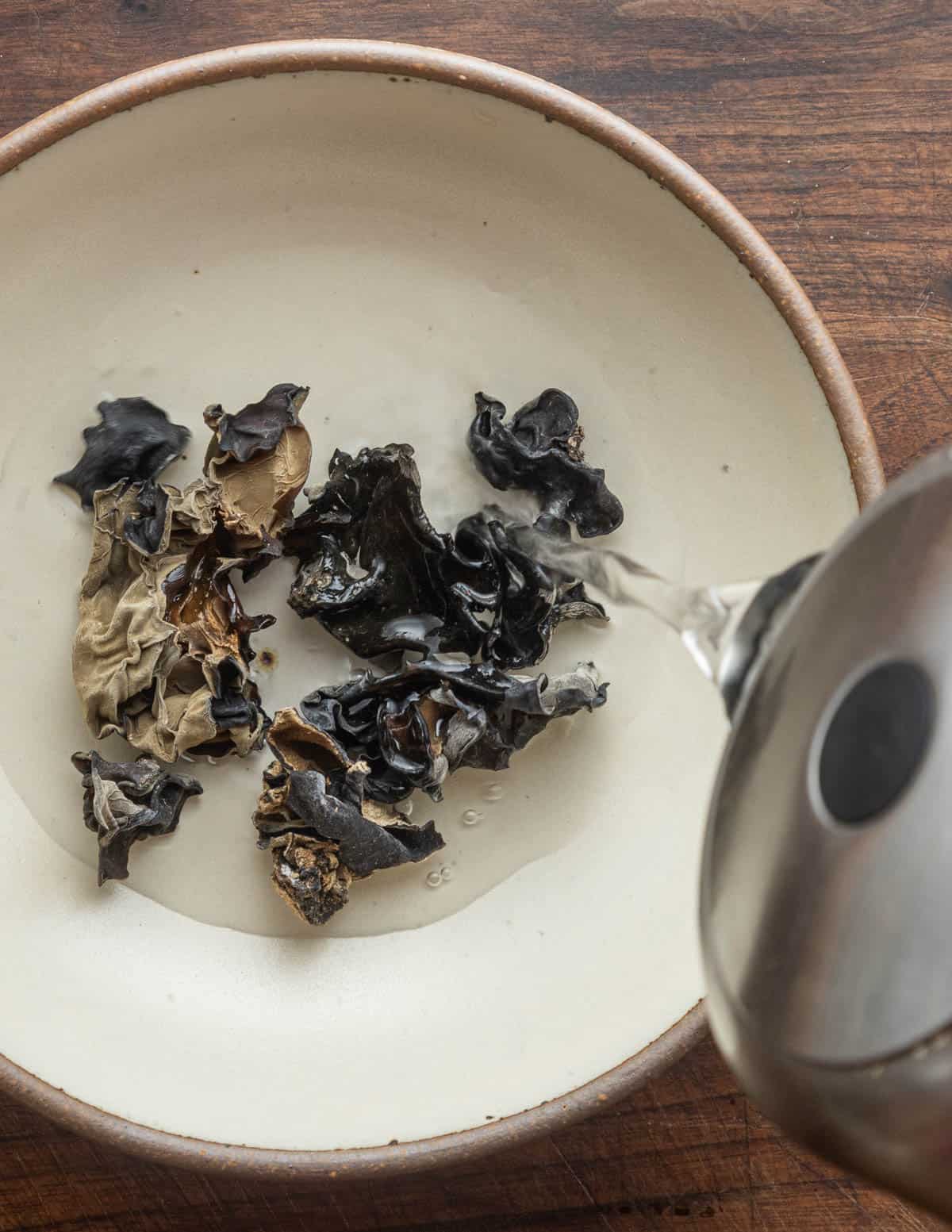
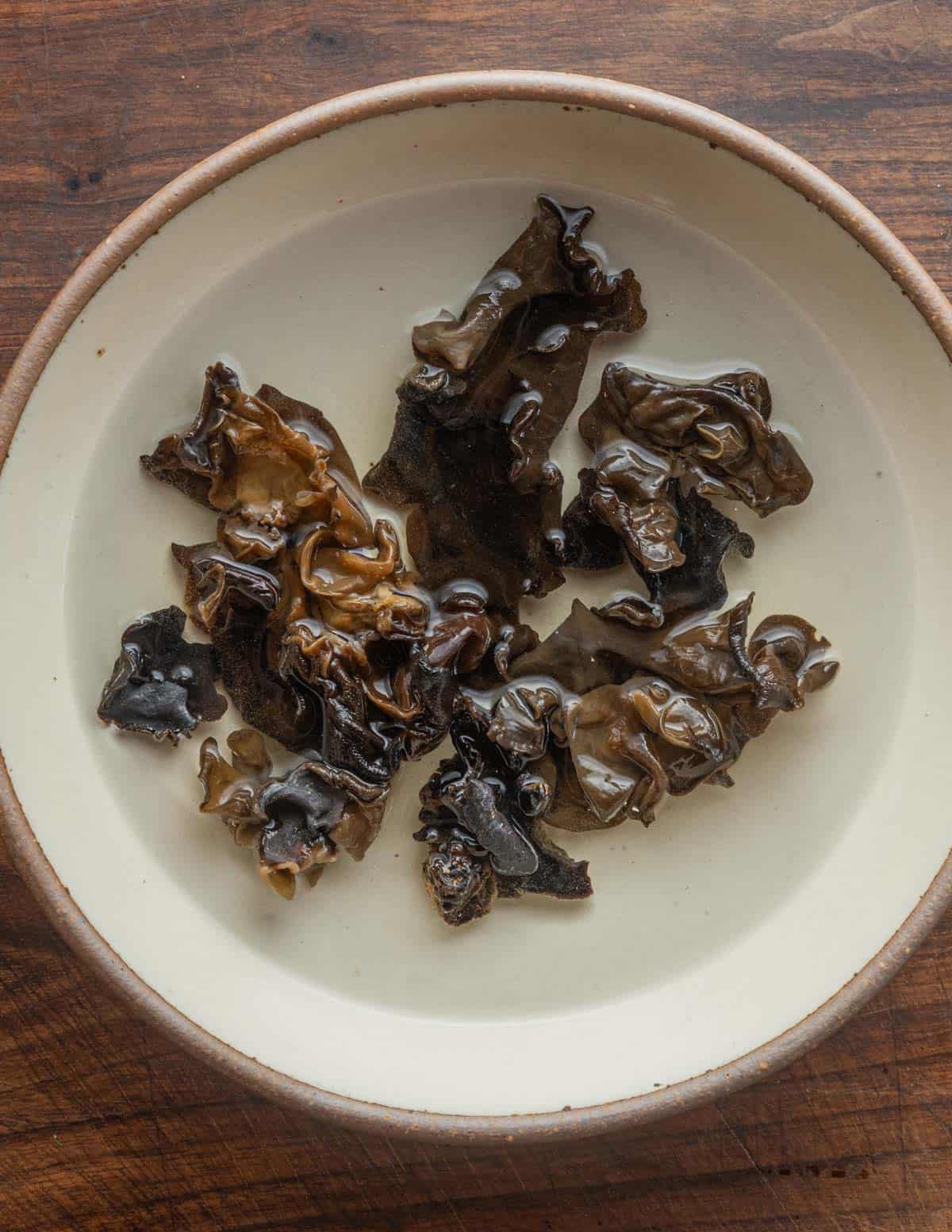
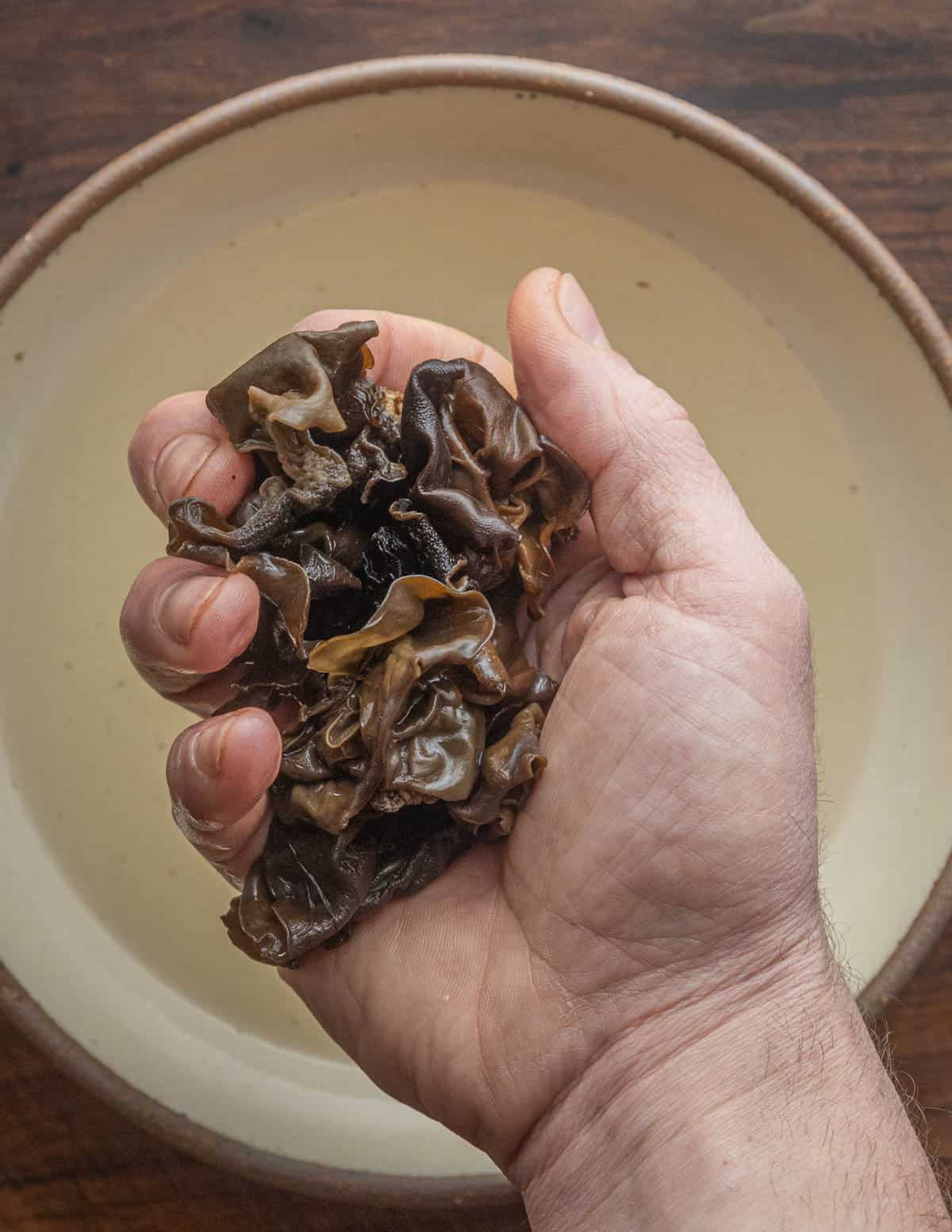
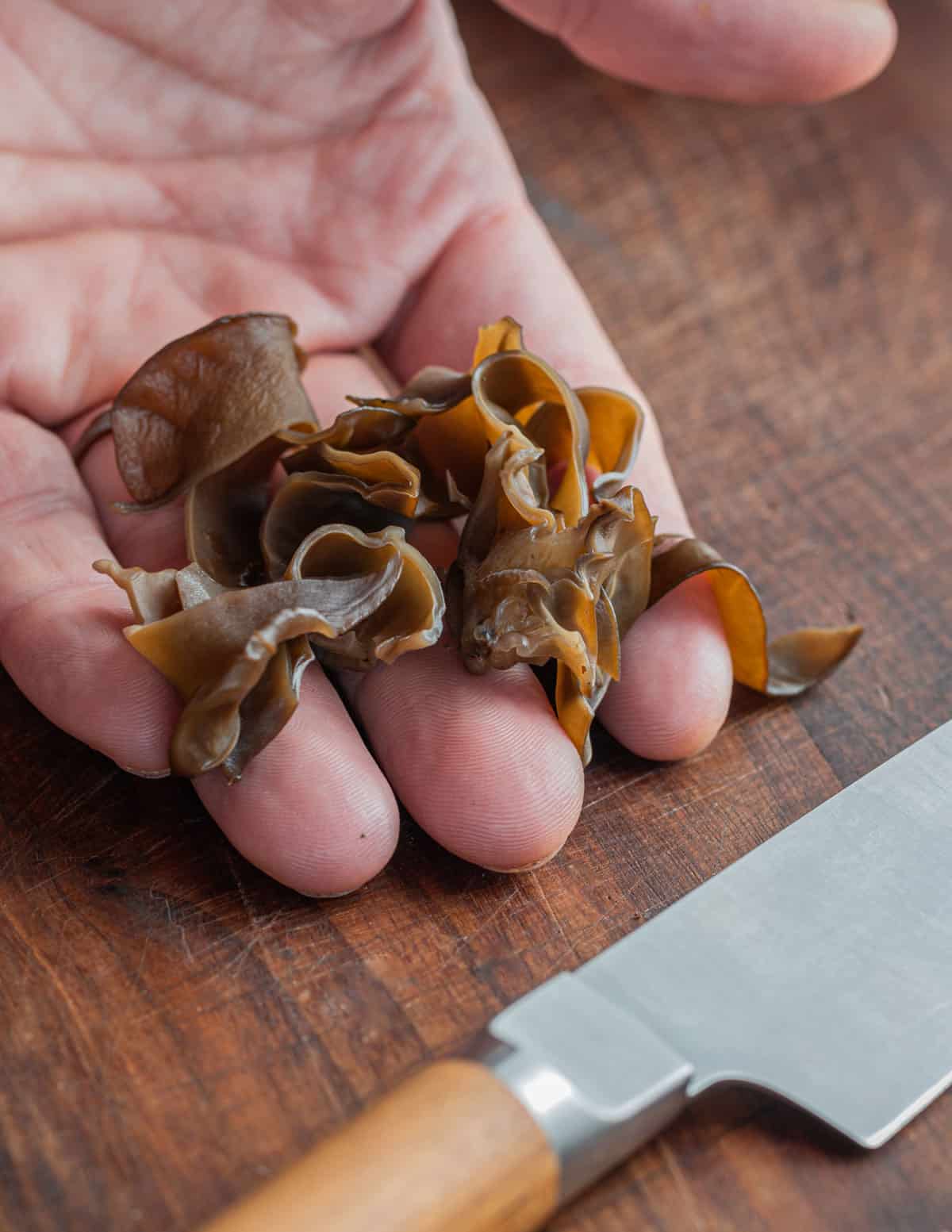
Cook fresh wood ear mushroom in any recipe where you'd use dried, just skip the soaking. You'll find them slightly more tender than their dried counterparts.
General Cooking Tips:
- Conversion rate: ½ oz (14 grams) dried wood ear mushrooms will equal 3 oz (84 grams) after rehydrating and squeezing dry.
- They're a great vehicle for spicy and strong-tasting seasonings like Szechuan pepper.
- Dried or fresh mushrooms should not be sauteed in hot oil and will pop, jump, and potentially burst from the pan while cooking.
- The texture is best enjoyed by cutting in thin strips or small pieces.
- Add other mushrooms to recipes with wood ear fungus for a contrast in texture and flavor.
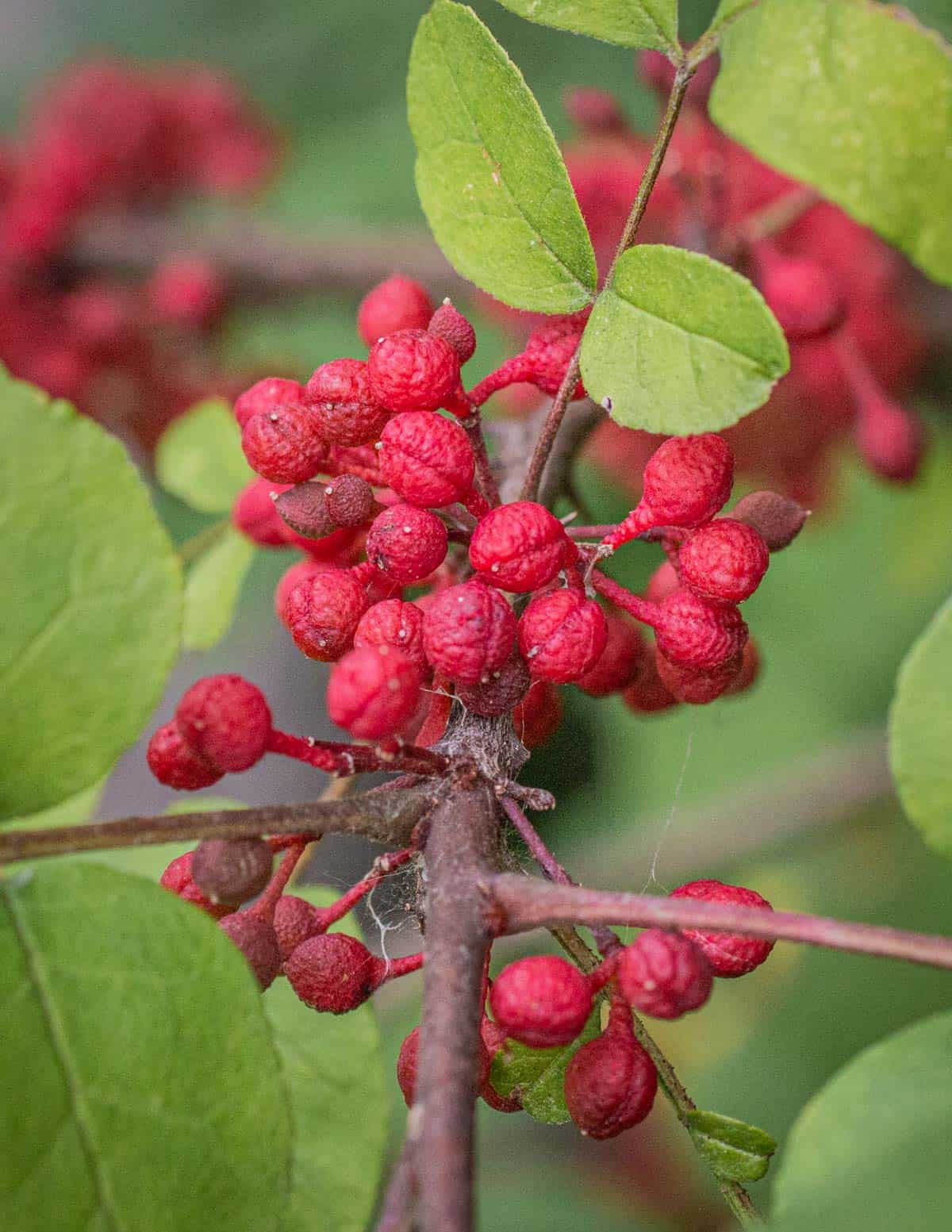
Wood Ear Mushroom Recipes
Wood ears can be used in any recipe where you'd like a mushroom with a chewy texture. Traditional recipes using a variety of ingredients with different colors and textures are a good place to start.
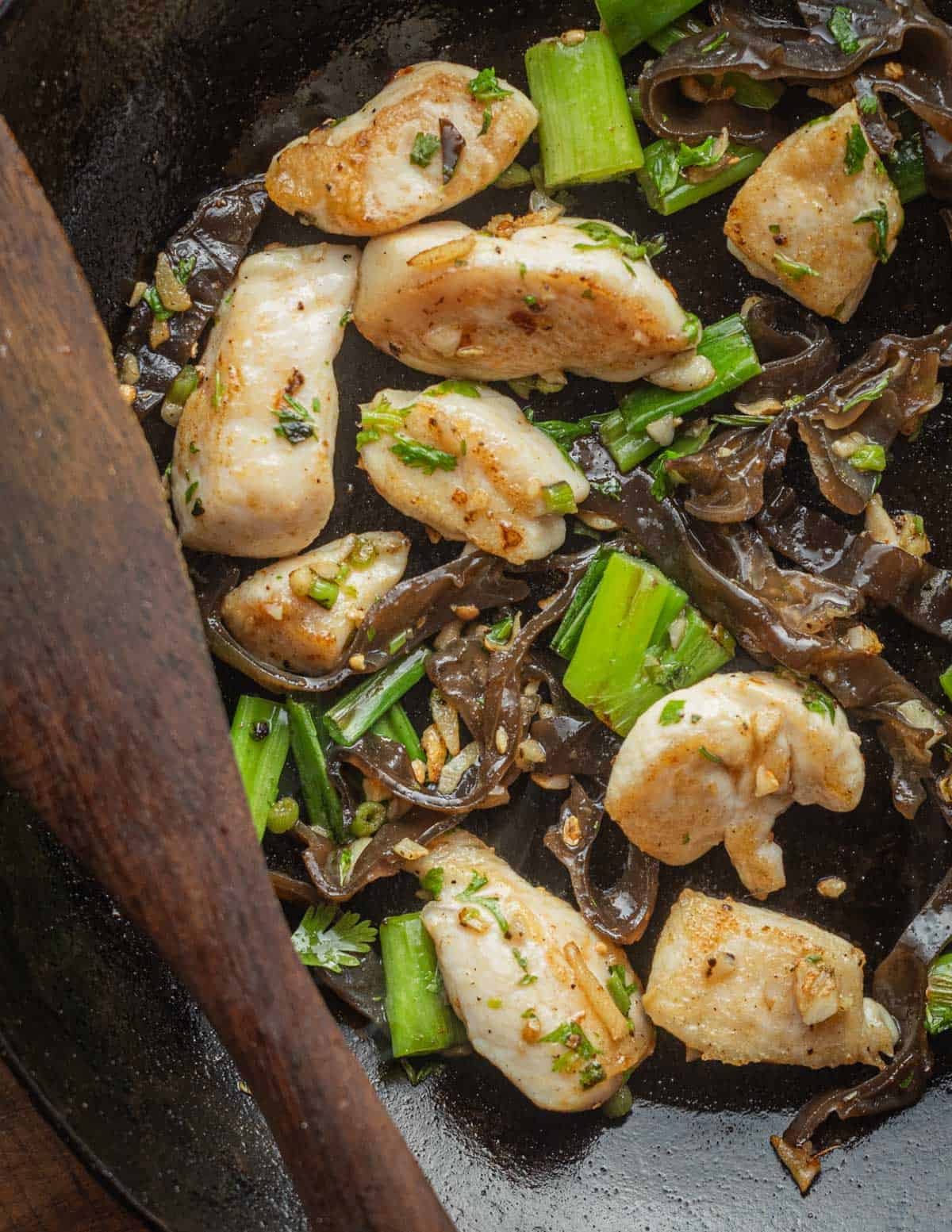
Ajitsuke Kikurage: The Wood Ear Mushroom Condiment for Ramen
Marinated mushrooms that can be put directly in soups and noodle bowls like Tonkatsu ramen, or added in a small pile as a garnish. Mix 3 oz thinly sliced fresh steamed or rehydrated mushrooms with 1 tablespoon each soy sauce and Chinkiang vinegar. Add crushed red pepper and sesame oil to taste. Herbs aren't traditional but they're appealing.
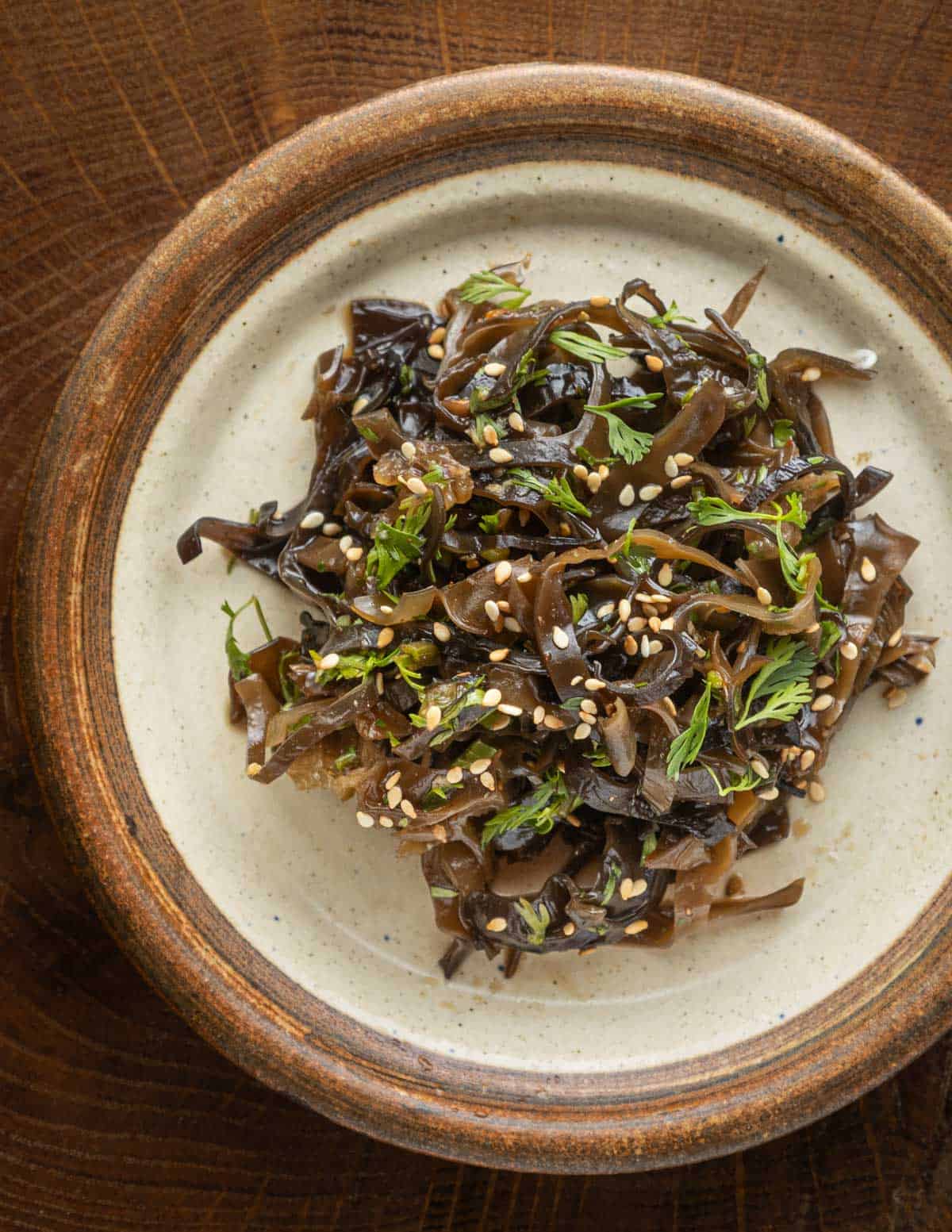
Spicy Mushroom Noodles
A good late night snack warm or cold. For one serving, take 4 oz mushrooms (⅓ wood ear) and saute them quickly with a little minced garlic and ginger. Add a splash of chicken stock and a spoonful of hot chili paste. Add sliced wood ears and simmer until thickened, then toss with 3 oz cooked noodles and plenty of sesame oil.

Hot and Sour Wood Ear Soup
A traditional recipe for you'll see in many Chinese restaurants. I like to use a blend of winter mushrooms. Serve it in small cups with a drizzle of chili oil. See the recipe here.
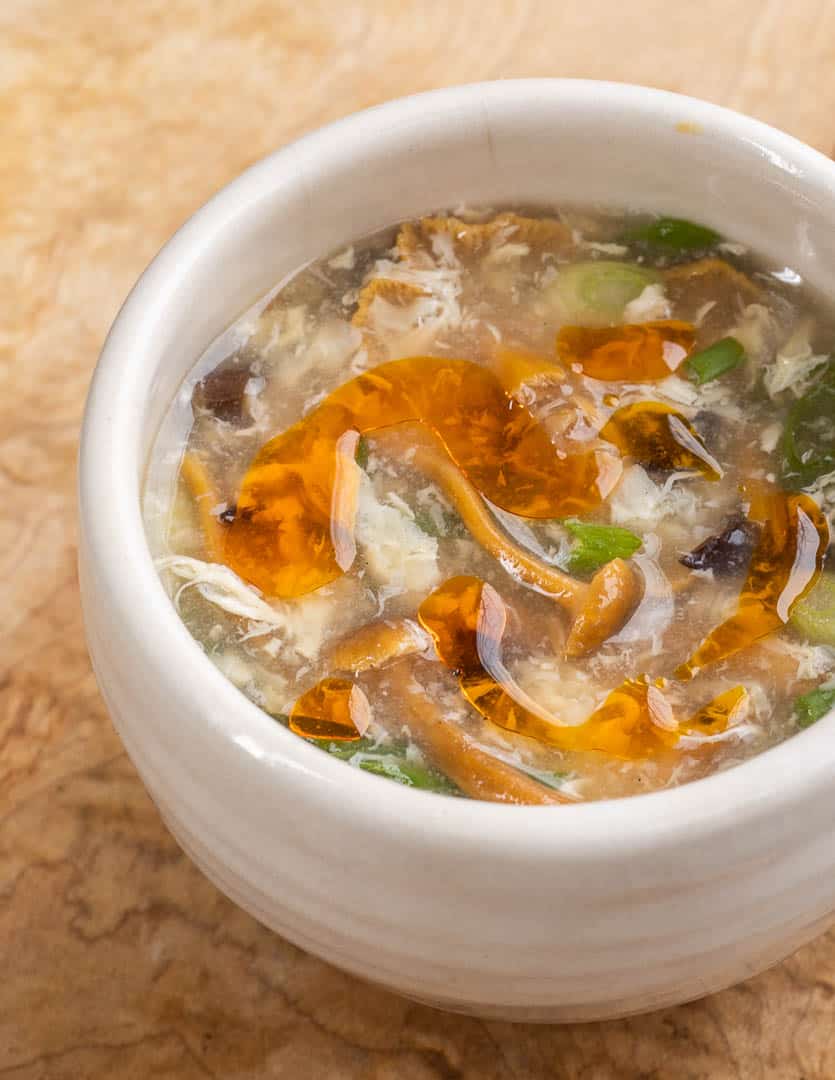
Wood Ear Ramen
Homemade ramen made with wood ear and shiitake mushrooms. Made with homemade broth and served with a soft egg and chili crisp it's food of the gods. See the recipe here.

Chinese Wood Ear Mushroom Salad
A great way to sample their texture the first time. The traditional Chinese salad is made from dried mushrooms cut into thin slices, seasoned with Black Chinese Chinkiang Vinegar. I add half fresh mushrooms for variety and color, along with fried shallots. The recipe's below, and it's demonstrated in the video.
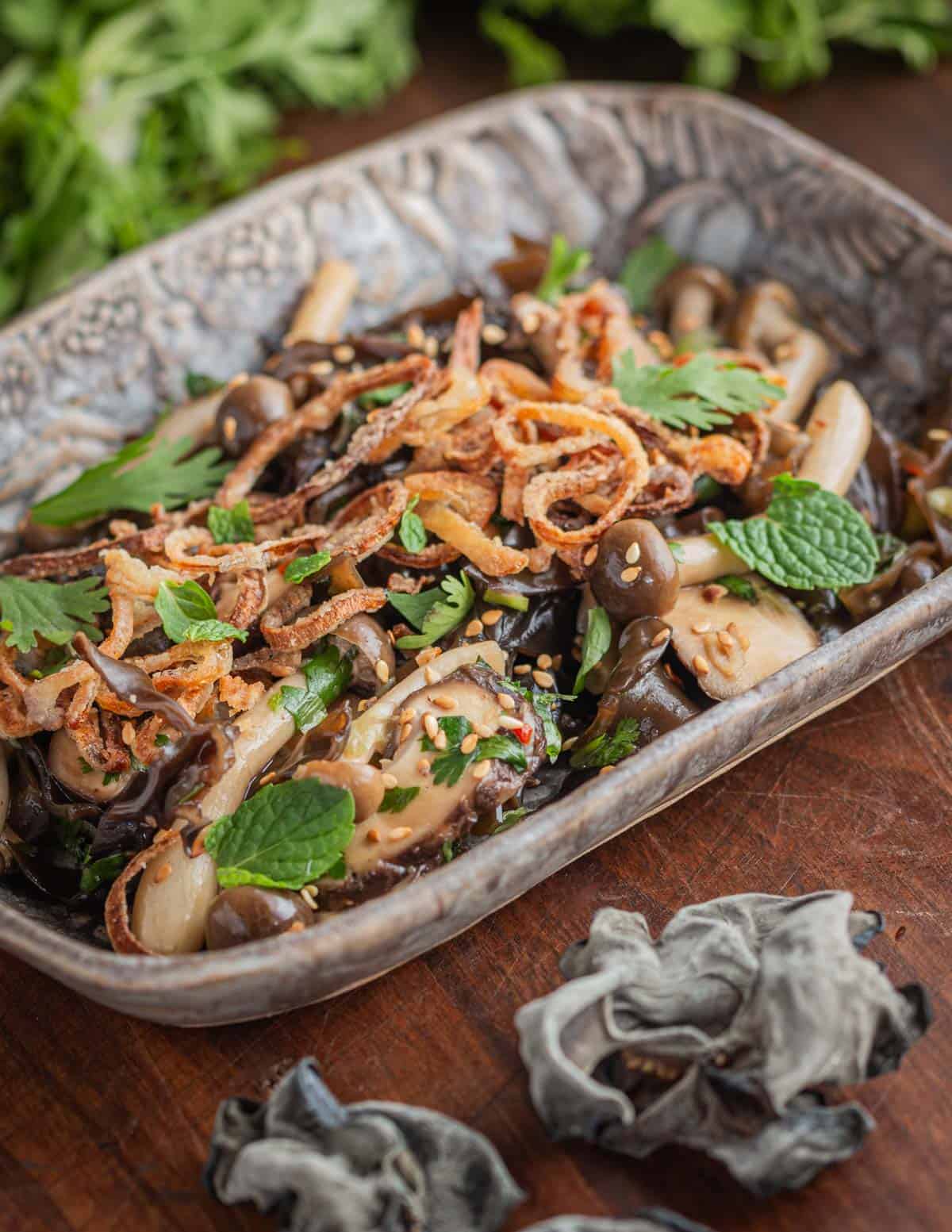
More Mushrooms Enjoyed in Japan
Wood Ear Mushroom Salad
Equipment
- 1 1 quart mixing bowl
- 1 Steamer basket
- 1 Small 3 quart soup pot for steaming the mushrooms
Ingredients
Mushroom Salad
- 1.5 cups warm water
- ½ oz dried wood ear mushrooms or 3 oz fresh wood ear mushrooms
- 4 oz shiitake and other Asian mushrooms like beech mushrooms
- 1 Tablespoon Chinese Black Vinegar
- 1 tbsp soy sauce plus more to taste
- 2 teaspoons sesame oil
- ½ teaspoon crushed red pepper flakes or more to taste See note
- Small handful chopped cilantro
- 1 tablespoon coarsely sliced mint leaves
- 1 teaspoon toasted sesame seeds to garnish
- 1 oz scallions sliced
Fried Shallots
- ¼ cup cooking oil plus more as needed
- ½ cup all purpose flour
- 6 oz shallots peeled and shaved on a mandoline
- ¼ teaspoon kosher salt
- ¼ tsp Fresh ground black pepper
Instructions
Fried Shallots (Optional)
- Combine the shallots, salt and pepper in a bowl. Mix the shallots with your hands to break up the rings into pieces. You can also thinly slice the shallots the “long way” to avoid having to pull them apart.
- Toss the shallots in the flour. Meanwhile, heat the oil in a cast iron skillet on medium heat and add the shallots, making sure to tap off excess flour by tossing them lightly back and forth between your hands.
- Fry the shallots until golden-brown, then remove to a plate lined with a paper towel and reserve. They’ll last for a day on the counter and can be gently refreshed in a warm (250 F) oven to make them crisp again.
Mushroom Salad
- If using dried wood ear mushrooms, pour the water over them and allow to rehydrate for 10 minutes. Remove the mushrooms to a cutting board and cut into ½ inch strips. Slice the other mushrooms into comparable shapes.
- Steam the mushrooms or cook in a skillet with a splash of water for 5 minutes, then transfer to a bowl and add the vinegar, soy sauce, sesame oil and chili flakes.
- Double check the seasoning for salt and adjust as needed. Allow the salad to rest for 30 minutes before serving.
- The mushroom salad can be served cool, warm, or at room temperature.
- To serve the salad, mix in the herbs at the last minute, mound the salad on a plate, garnish with the fried shallots and serve as a side dish.

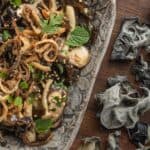
C. Logan
Hello Chef Alan. This is Chris up in SE Manitoba. I am stoked because I found these brown ear like fungus that are dark brown in fold & beige on the outside. They were on a high area on a trail side near mostly coniferous on the ground. I looked them all over to identify & many pictures were similar to the 'Auricularia americana'. We had a couple heavy rain hits the two days before as well. Also this area was forested the year before drastically which I figure makes for a "floor" growth possible? I am dehydrating them in good feeling I'm okay with the find as being such. Of course, I took photos but your email instruction about recipe questions deterred me to communicate here since that is what I potentially am drying/making. Is it fine to request if you'd take a gander at them & feel free to kick me off my "high horse" here? (: I am ever a new forager that wants to err on the "if any doubt throw it out"; hence my solicitation. 🙂
Alan Bergo
Hey there. Sure send me an email.
Chris
Oh nice ty! Sent sir! Thanks again.
Sandy Lou
Holy moly - My mouth is watering!
Thanks, Alan!
Alan Bergo
Thanks Sandy.
Carla Beaudet
Did make this as a banchan along with a vaguely Korean dinner tonight. It was excellent, even though I have no greens on hand outside of scallions and parsley, which had to stand in for the cilantro. You don't have to post this bit: I noticed the soy sauce was missing from ingredients list. Yeah, I'm a stickler, or I just notice these things because step 1 is always assembling my mis-en-place, and then if anything comes up that hasn't been called out in the ingredients list, it's obvious to me. I figure you'd rather know than not, but really, just cut this bit out before posting; I'm not one for public shaming.
Alan Bergo
I love some banchan. And, as you can see (two weeks in a row) I miss little things all the time, thanks for pointing it out. I just ate the rest of mine with some leftover rice and chili crisp.
cook and drink
Looks delicious, thanks!
Alan Bergo
Thanks guys.
Carla Beaudet
Thanks; I didn't realize Tremella sp. were a parasite of Stereum sp. Always nice to learn more about "What is this mushroom doing in the woods?". Last Spring, in East Virginia (that's what we West Virginians like to call it) I found and gathered pounds and pounds (literally a lifetime supply) of some Auricularia species growing on Boxelder. These specimens were 3"-4" across - the largest I've ever seen - and if by "medullary zone" Kuo means the gelatinous layer between two coritcal layers, I'd say yes, this had that, which would make them likely A. fuscosuccinea. Thanks for inspiring me to get them out of the jar, rehydrate them, and use them for something more creative than a bowl of hot and sour soup (not that there's anything wrong with that).
Alan Bergo
You're welcome. Thanks for mentioning box elder too, seems like the hardwood lovers really like maples and elms.
Joy Cypher
Thanks for the enthusiasm for the wood ear--I've been harvesting these west of Philly for years and have never seen anyone else get excited about them! They are the perfect delivery methods for spicy, numbing prickly ash sauce. Nearly a guaranteed find on fallen Maple after a heavy rain here--especially when the bark is just starting to peel off the tree. As always, Yeah Alan!
Alan Bergo
Hey thanks Joy. I've been meaning to give them some love for years. I've been eating spicy noodles with wood ears and Szechuan chili crisp all week, just such a great texture.